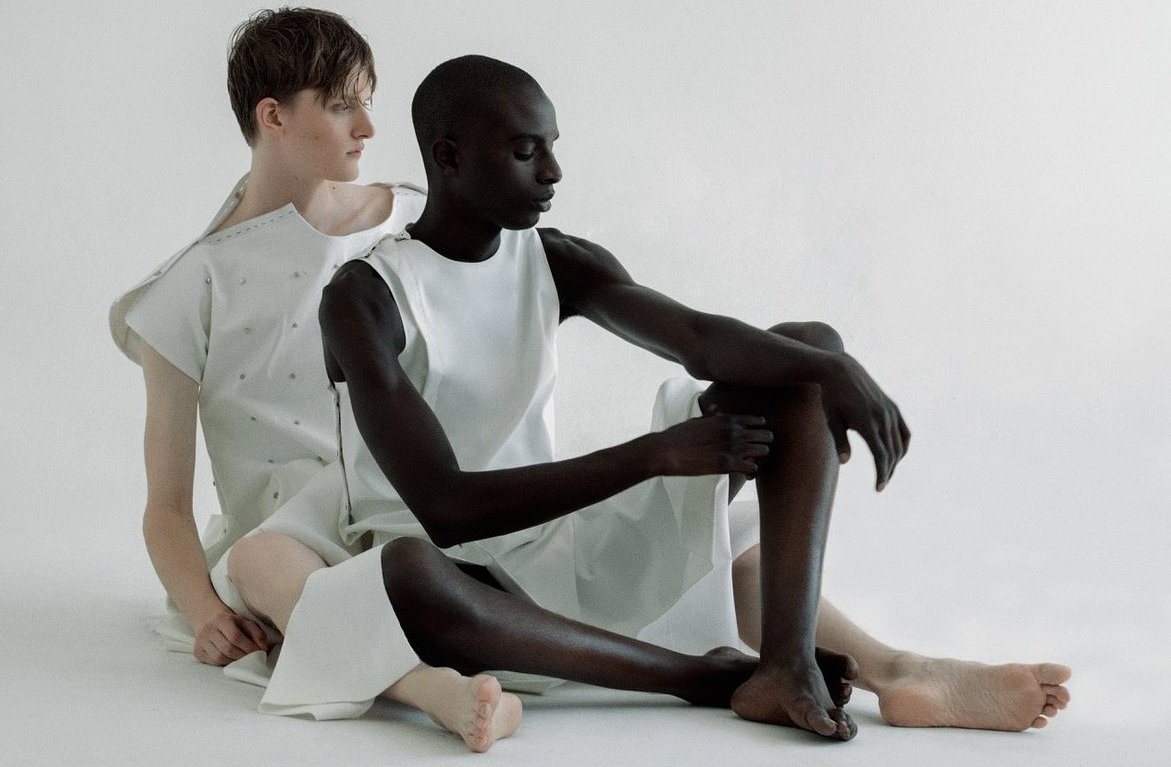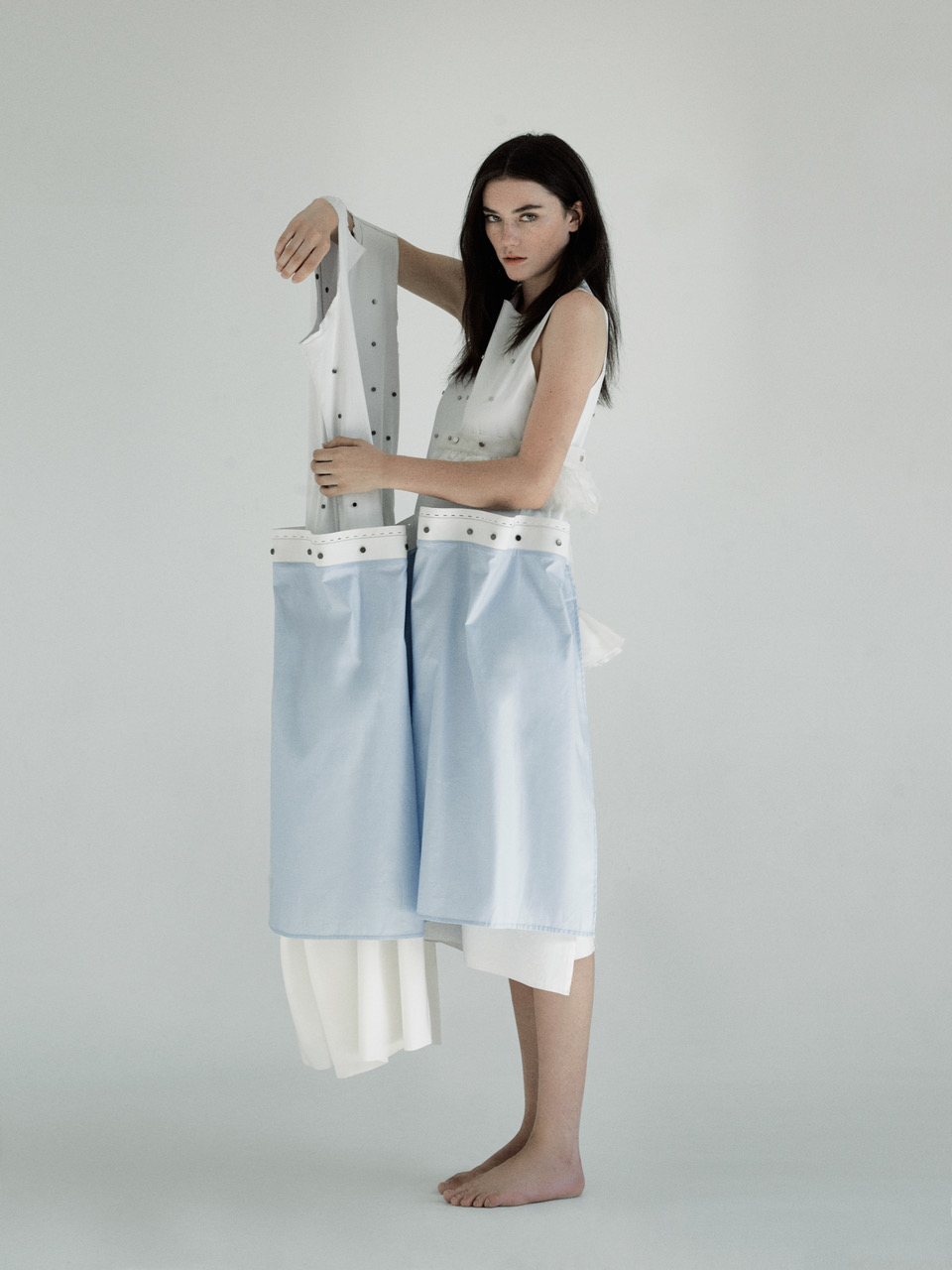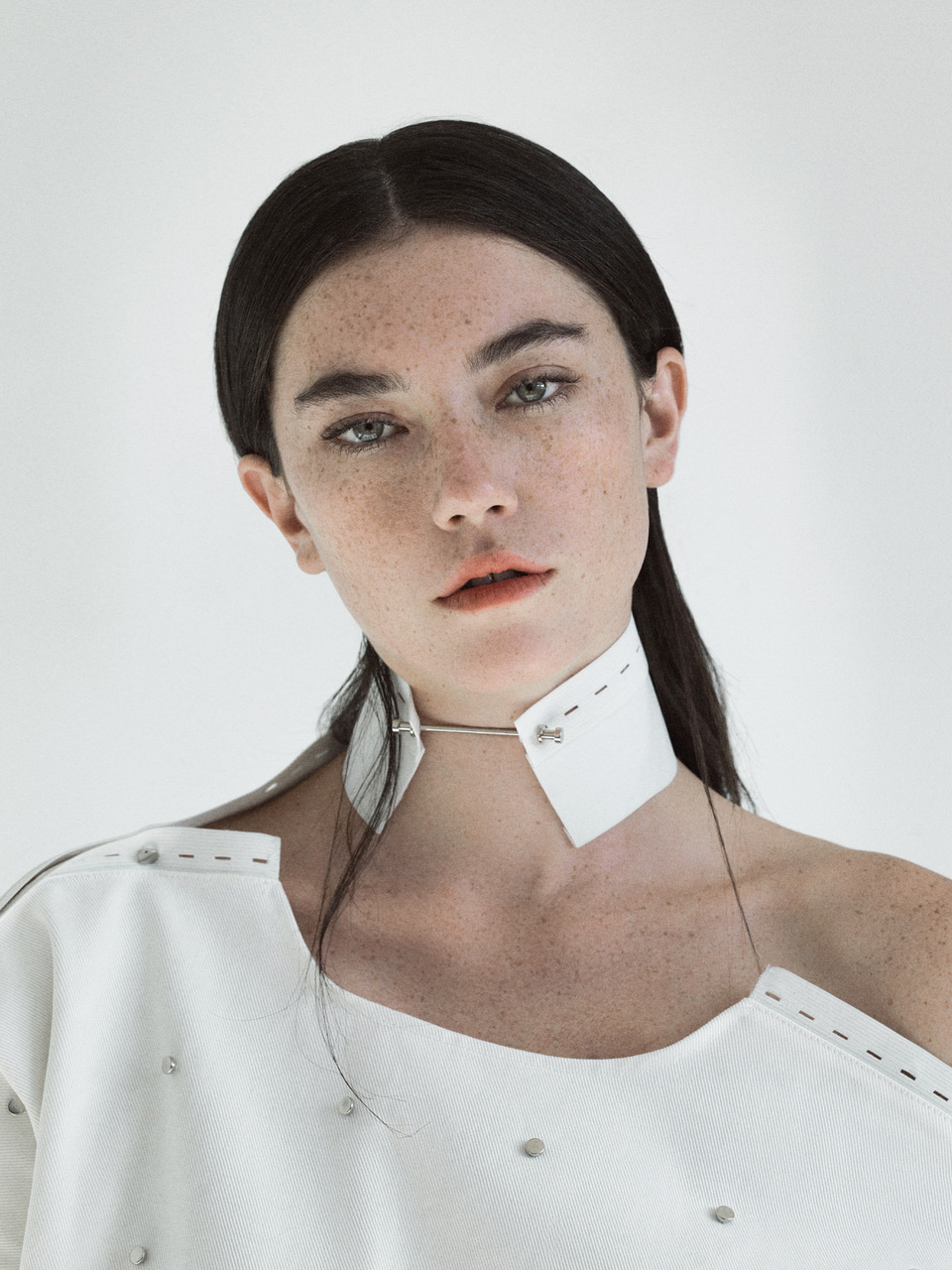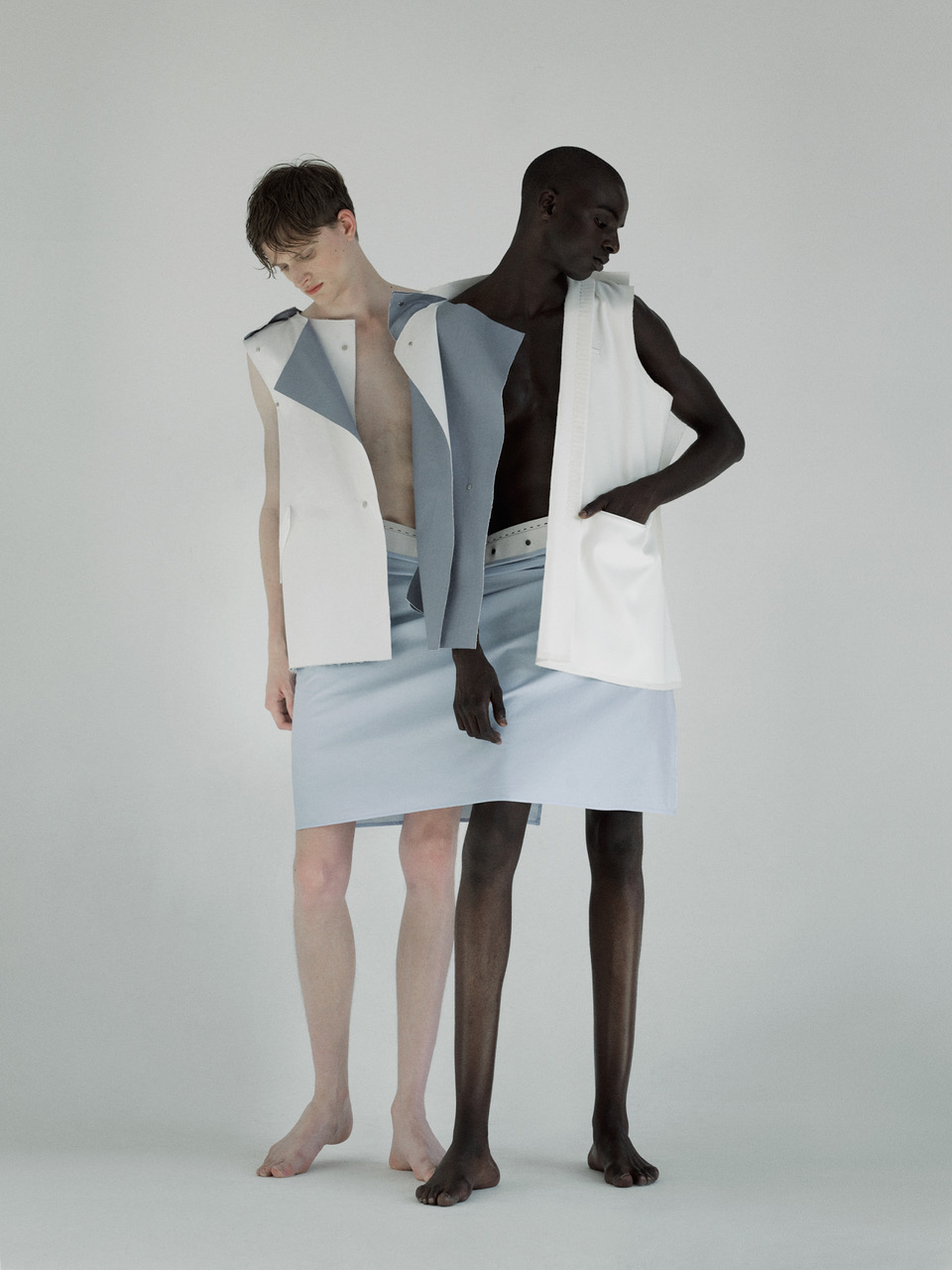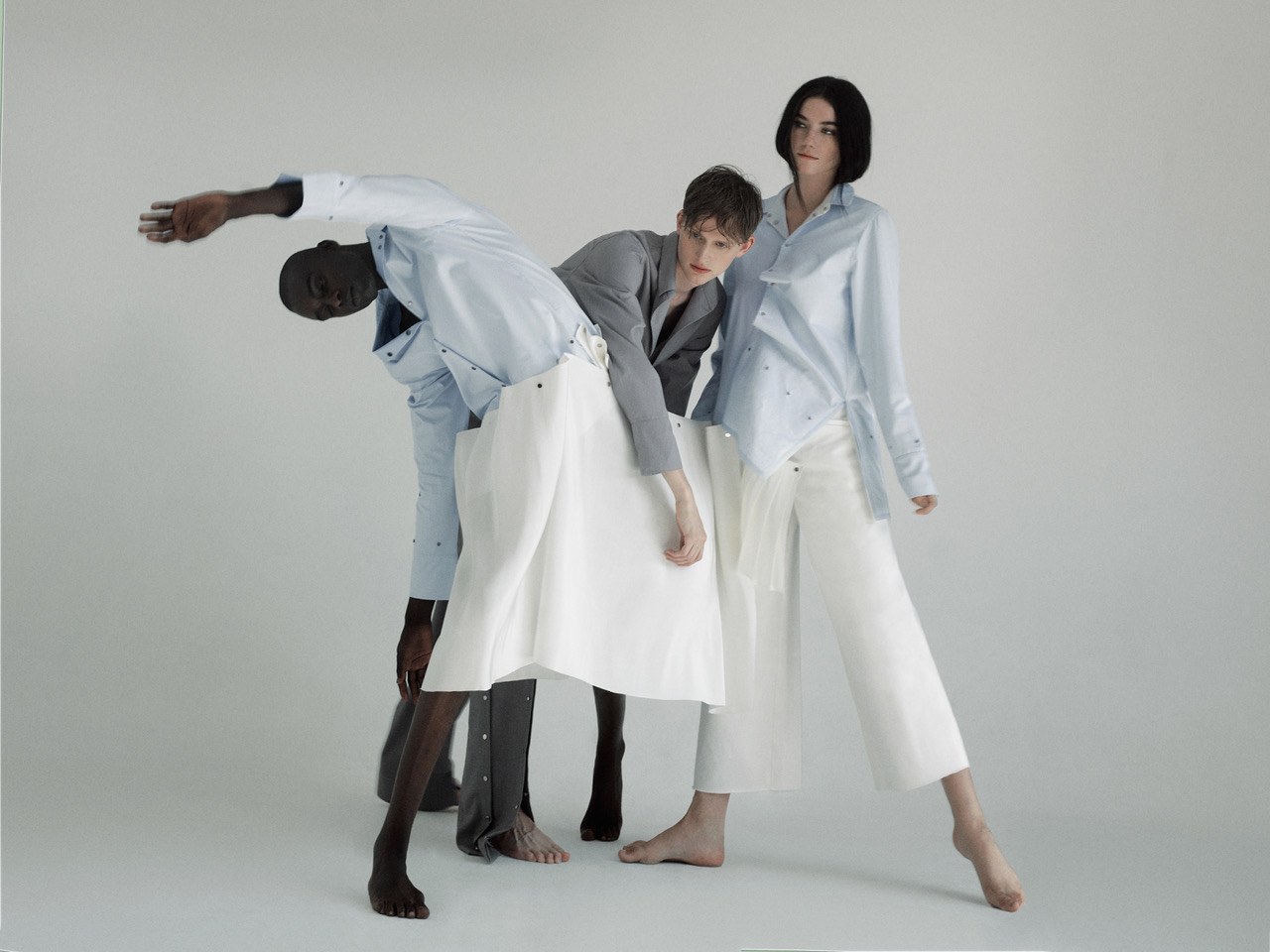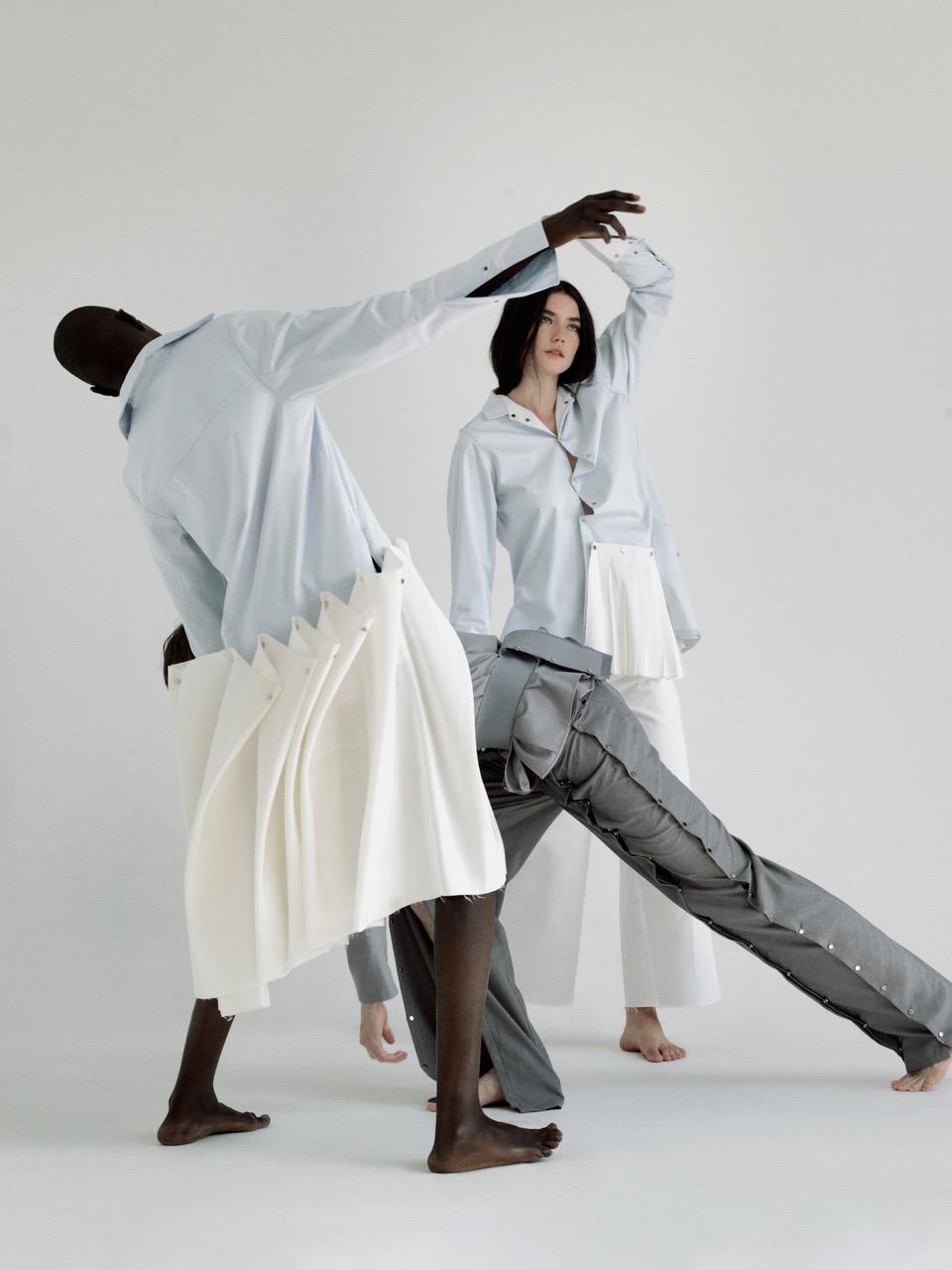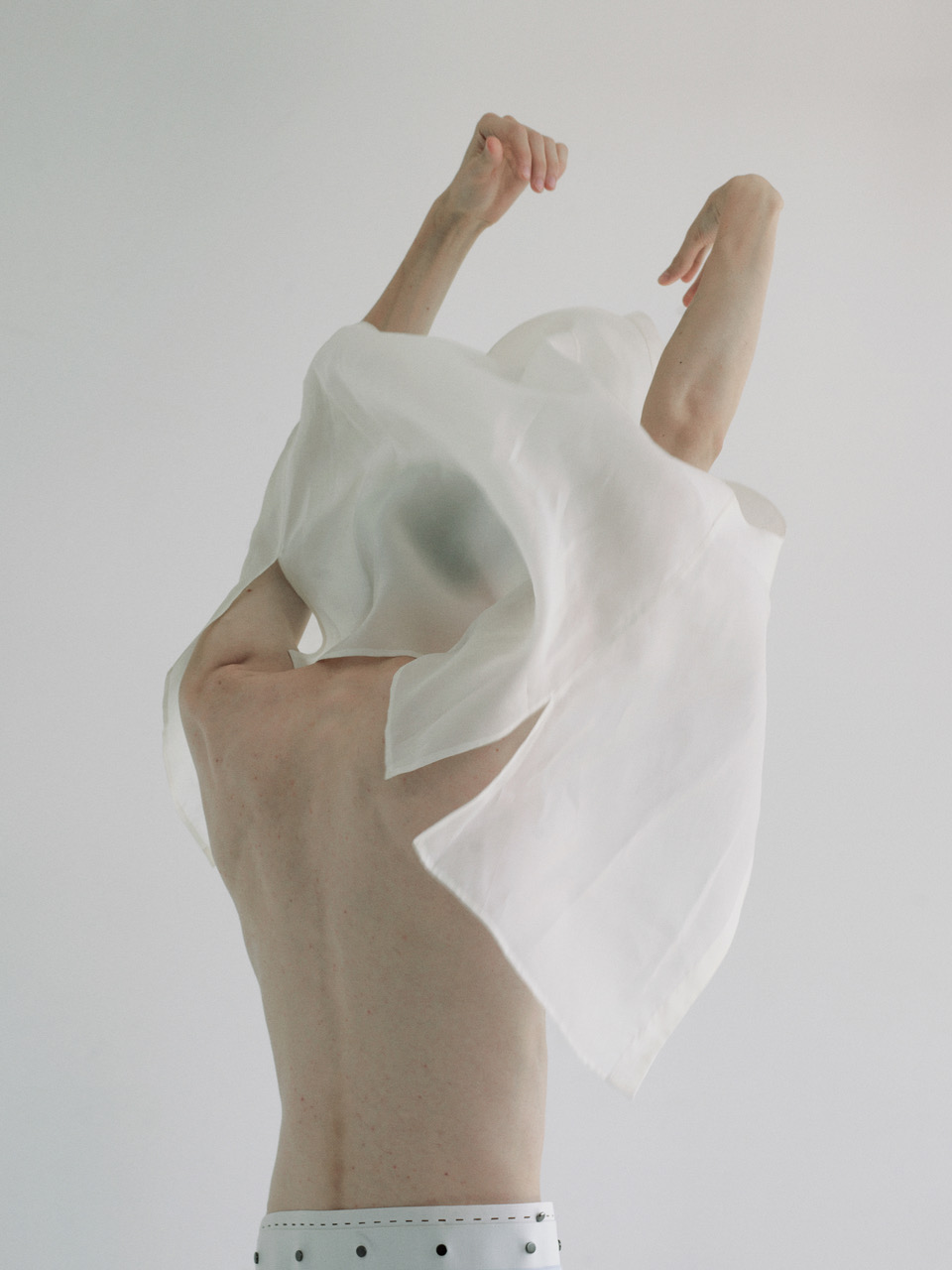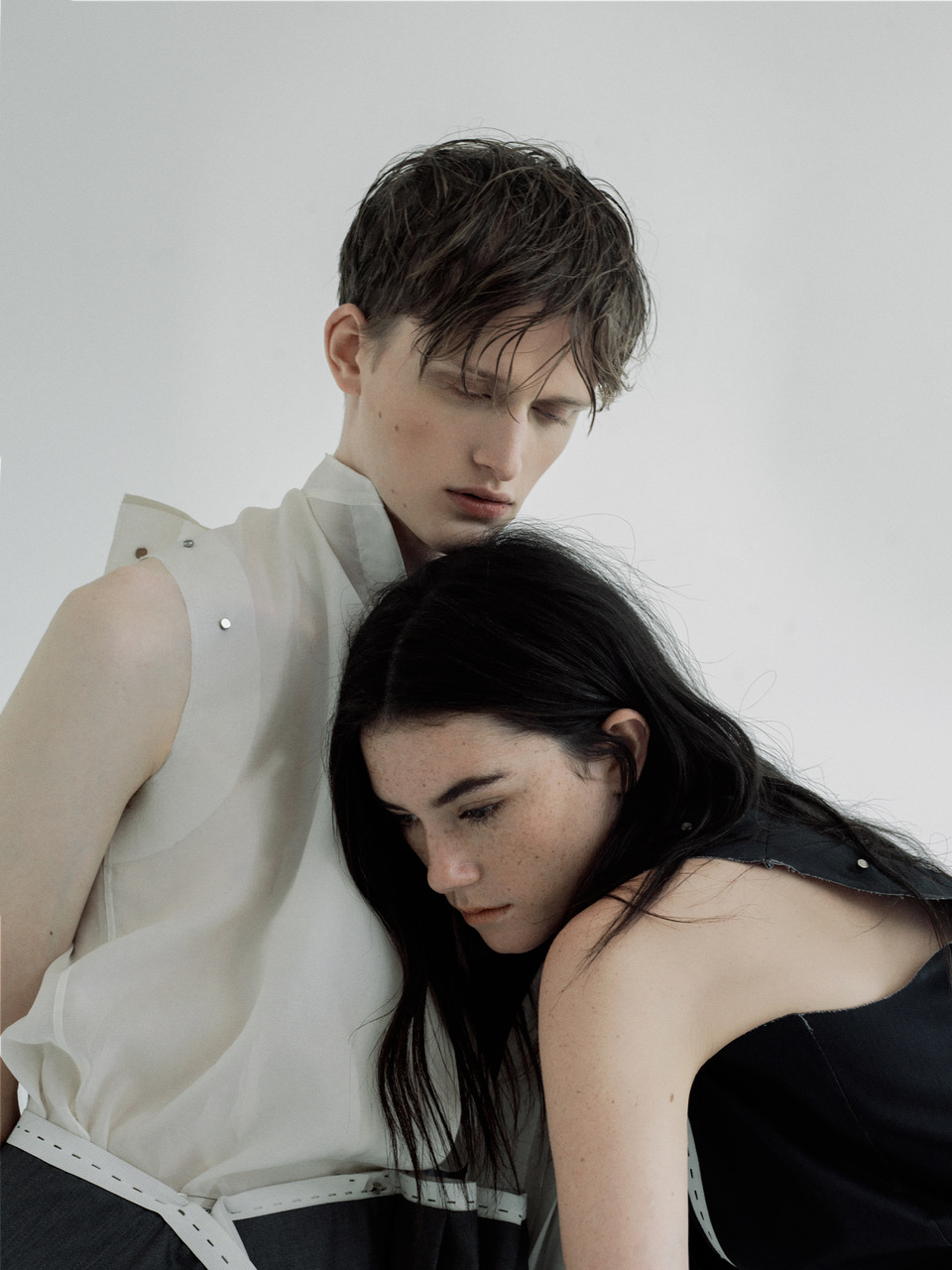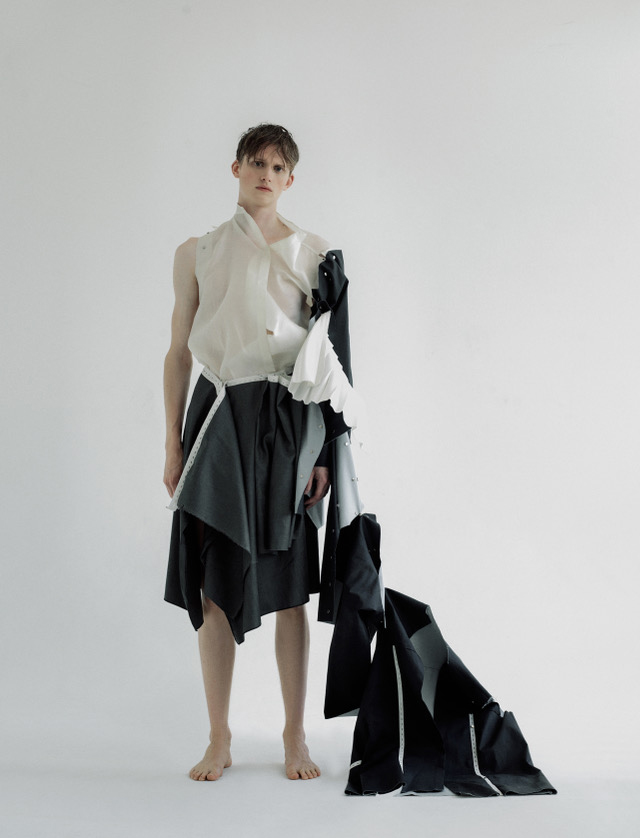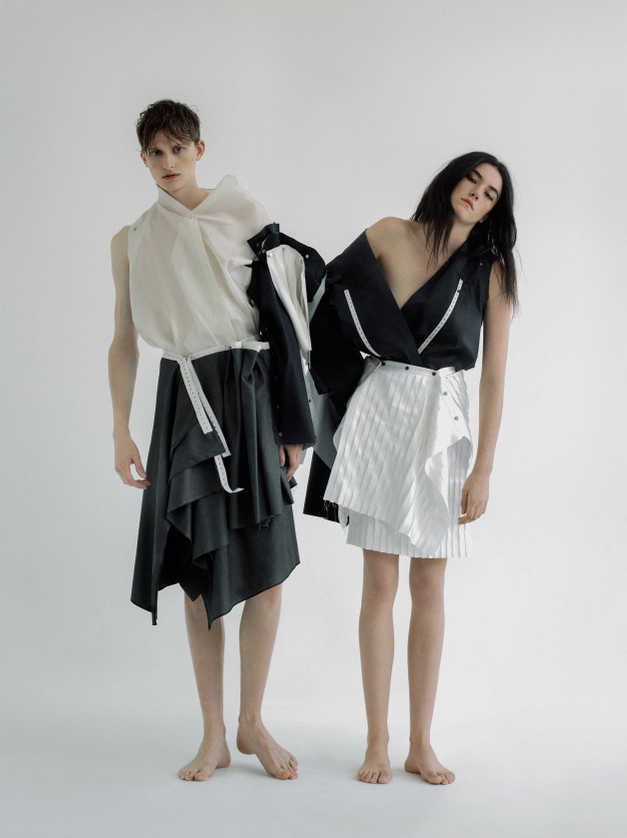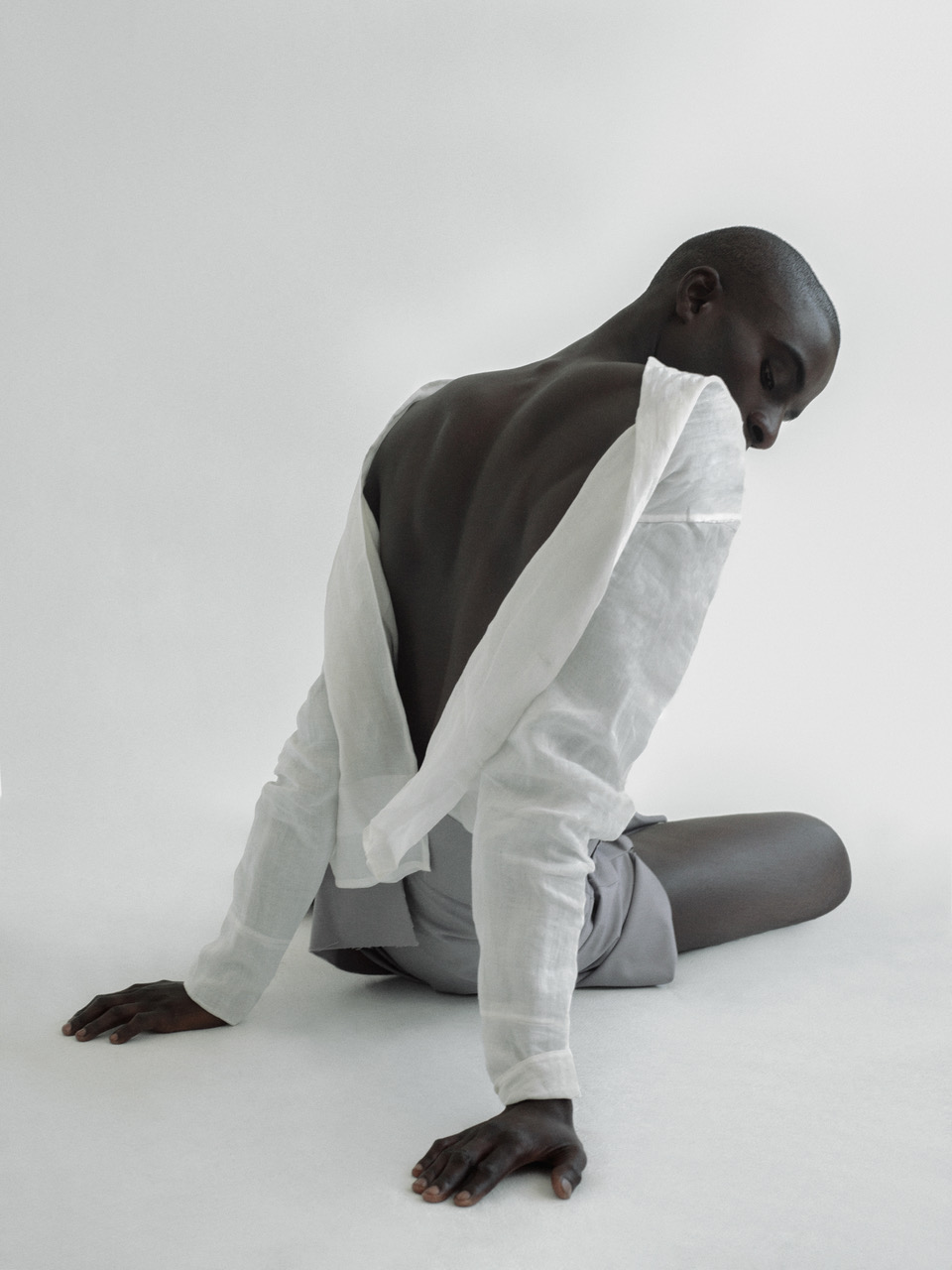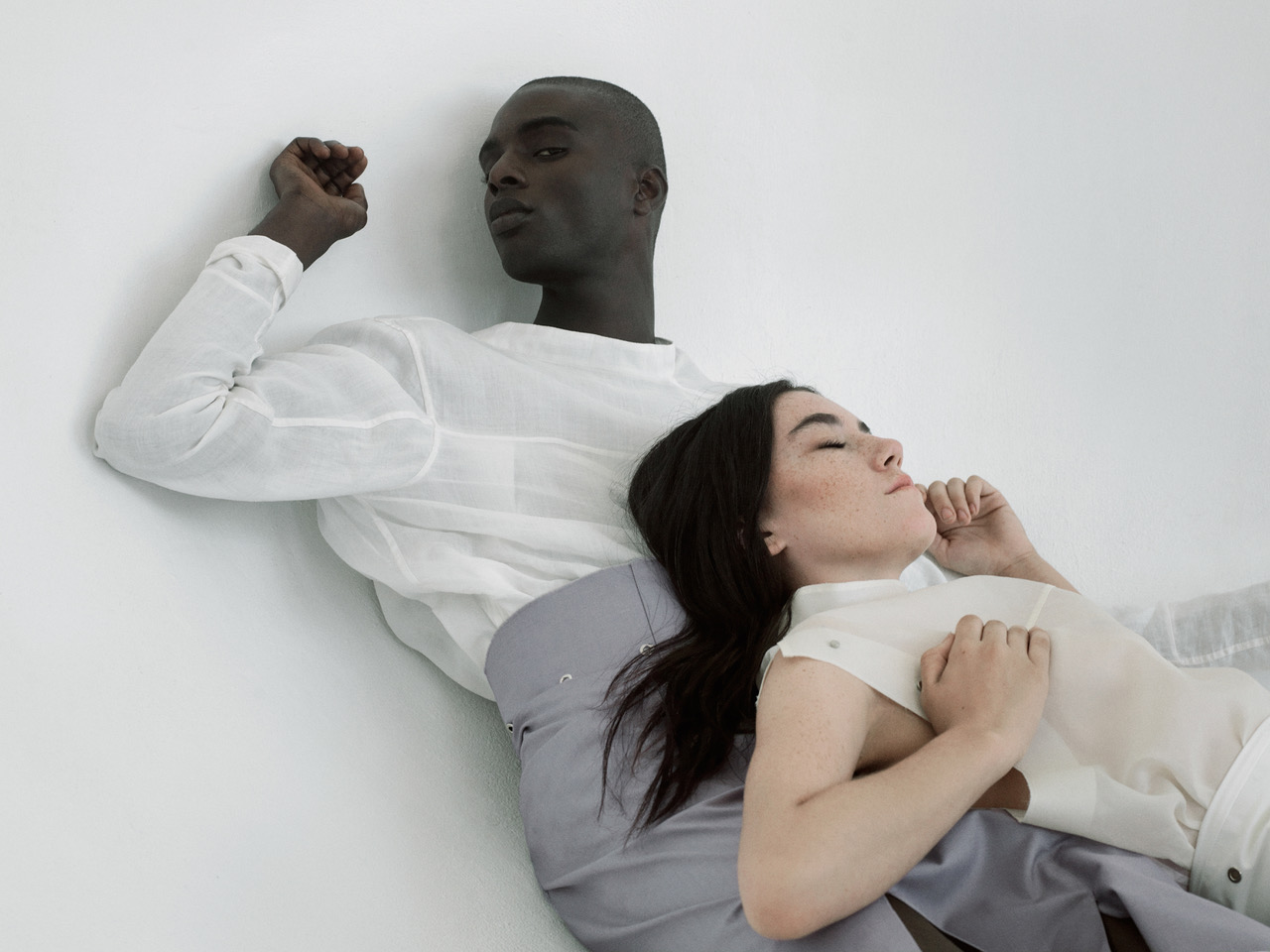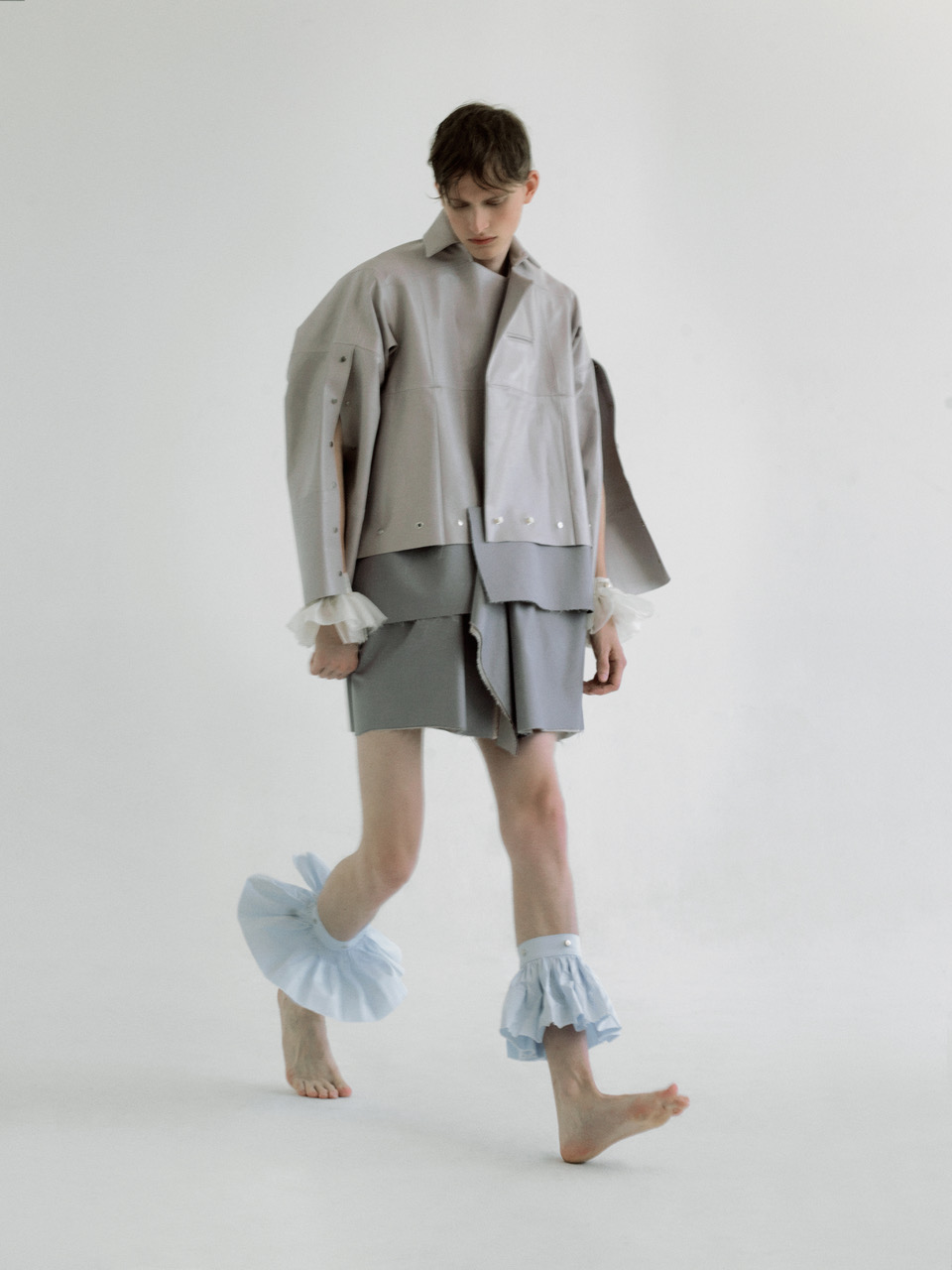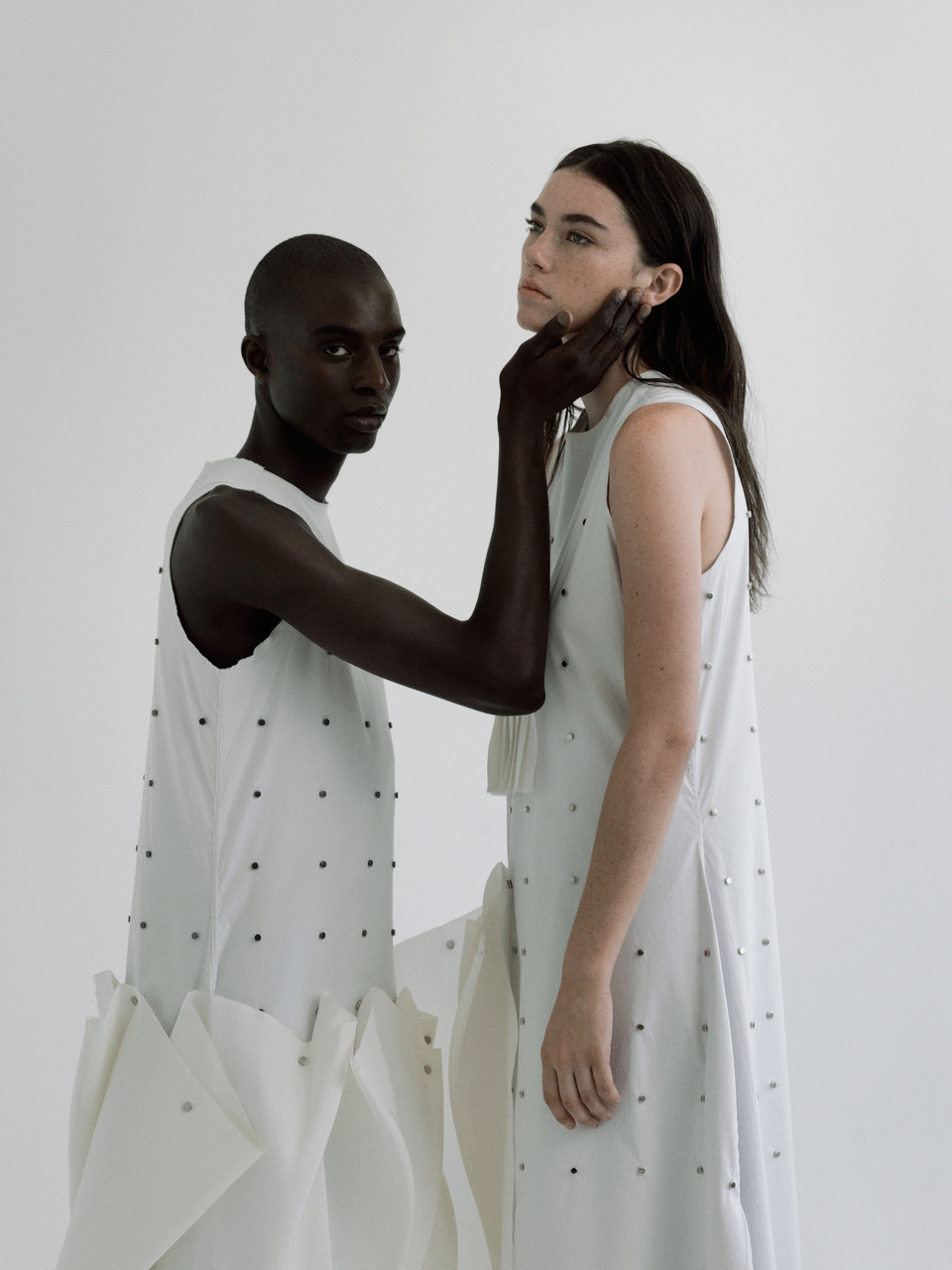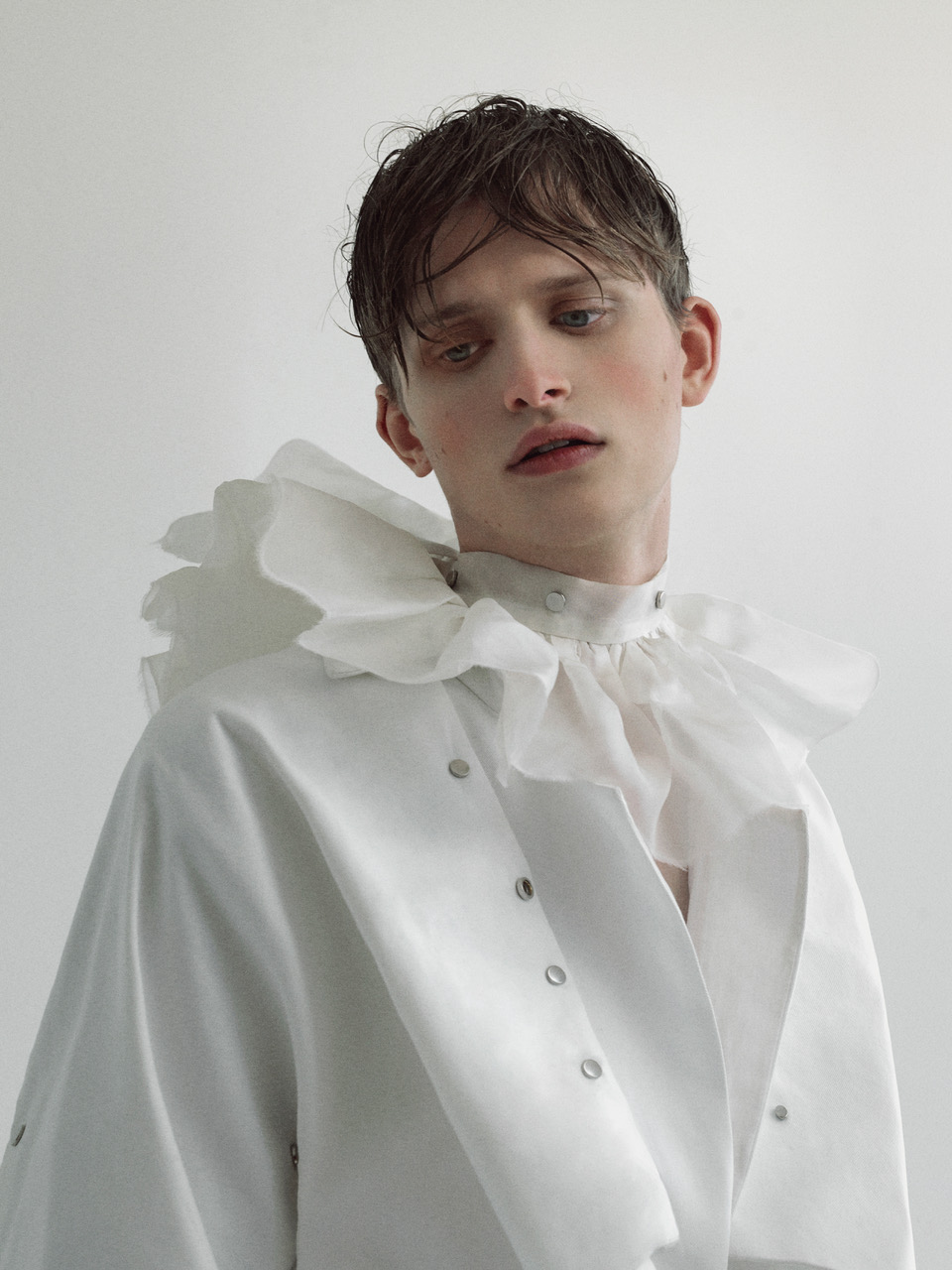WEI HUNG CHEN: MOD(U)LAR MIND
As a recent graduate from Parsons School of Design in New York, Taiwanese designer Wei Hung Chen is enlightened to the wastefulness of fast fashion and approaches his work with the intent to correct it. While recognizing a modern consumer’s wants and needs, Chen presented his thesis collection with a gift of choice: each garment is mindfully designed with adaptable pieces that are capable of transforming at the wearer’s discretion depending on climate, occasion, or mood. The result is a long-lasting consumer collaboration that tackles the industry’s less than perfect habits both economically and brilliantly.
In your work thus far, it feels as though you’ve adopted a role not often explored in fashion design; the nature of your concept is sometimes seen as an expression of creativity, but less so with such passion and advocacy for a cause, this cause being the issue of overproduction in the fashion industry. How did you become so enthusiastic?
I’ve always been very interested in product design, and that’s how most product designers work—they find a problem and try to find ways to solve it. During my four and a half years studying at Parsons, I would always observe how they approach these issues and what products they create in order to raise awareness. [We] students studying fashion design have the entire school year to complete our thesis, so I knew I would have that time to sort of dive into an issue or topic, and that’s when I started focusing on waste in the industry. I’ve always been aware of it. The fashion industry is the second biggest industry to cause pollution and the most wasteful in the world, so I really wanted to explore ways to solve that.
Was the industry’s overproduction and consequential waste a catalyst in you becoming a fashion designer, or did you have a desire before you became aware of the existence and severity of those issues?
Yes—both, I think. I was torn between going into either product design or fashion design, so I wanted to combine both of them together and then dive into whichever specific design field I want to be in. I’ve learned through my course what it means to be a fashion designer and I’ve become even more informed of what the issues really are.
Within your attempts at handling the issues through your collection, how did you apply your personal ideals to its creation?
At Parsons we always tried to design sustainably, to use sustainable fabrics in a variety of ways, and to realize that because of the cost that goes into it, creating zero waste garments—in an industrial sense—is unrealistic because it’s too costly during production. So I wanted to find a different way that would be easier to approach for corporates, or to find a production method that wouldn’t raise as much cost, that could solve the problem essentially and get customers excited about the product. My modular method allows the customer to be able to take something off easily and reassemble it, so including the customer in the sustainable process is something I try to do as well—to give them the creativity and to realize the importance of the interchangeable pieces and of the collection.
Tell me about your personal design process in making this collection in terms of research and experimenting to produce such complex, interchangeable pieces.
I started researching a variety of things within the product design realm, like what the term modular really means. I looked into modular housing and architecture and how different parts of furniture or architecture are sort of preassembled in order to make that interchangeability happen. I researched different artists’ approach to deconstructing an existing object and reassembling it, and in fashion I studied existing garments and what part of the garment changes throughout time, [thinking] where I could start to make modular forms that attach and detach to create a variety of possible trends that you can change. Finding what elements to dissect to make the attachment and detachment easy was part of my process; I had to think about the safest sort of snaps and closures that wouldn’t let the garment come off easily, as well as methods for using different fabrics—lighter, heavier—so it was a constant experiment with the materials to see what fabrics suit which joining method.
How many separate garments did you make for this collection, and how many different looks would you say you can you create and build from them?
I’ve actually added a few more, so it’s rounding up to twelve looks that could switch and change into each other into probably around thirty looks. And I think in the process of designing the collection I was really thinking about creating a base for the first few seasons to establish what the core products are, and then afterward I’ll be creating only new components; it will be separate components and no longer a complete garment. In that way, the wearer can play around with it.
I see. I was curious about that in terms of your future work: you plan to continue producing modular pieces, yes, so how do you plan to design those components in a compelling way in order to keep up the momentum of your brand?
For the components it’s much easier, it’s more elaborate and more fun to create after the base pieces are designed. With the base pieces I wanted to include the customers that are more simple and minimalistic with their personal style. I’m currently designing the separates and right now they’re pleats and ruffles, but afterward I can make more creative shapes, because as long as I follow the system I created I can go as crazy as I want with the components and how they’re constructed. That in itself will be interesting to see. It’s the same with my accessories; with the glasses, components will attach to the base depending on how I want to create them. They can be as innovative as I want them to be.
What sort of materials do you like working with? What would you like to work with in the future?
I’m very comfortable with cotton. Cotton, denim, and wool. They’re very basic fabrics. I’m looking into high-tech fabrics and possibly sportswear materials, so high performance. Also, I’m interested in using different bonding methods like embroidery in order to attach different pieces together. There are so many possibilities because of all the high performance textiles I could come up with, so it will be interesting to explore that realm.
The collection is made up of unisex pieces. Was it important for you to create something for everyone, or was it more accidental because of the specific process in making your designs?
It was a bit of both, because throughout the design process I never thought of a woman that I was designing for, it was simply a person—the clothes themselves are more unisex than feminine. In this day and age, at least in the fashion industry, there is less of a gender division of how a man or a woman should dress—if you like it and think it fits your identity, then go for it. These ideals fit with how I wanted my collection to be, so I thought why not include male models and see how it looks. Throughout the semester and the judging panels, the judges encouraged me to include menswear, saying that men would be interested in this sort of way of dressing, and so I began to slightly think of it from a menswear perspective, but I never really have a gender identity assigned to anything I design.
Was it important for you to attend such a revered university as Parsons?
It was, because in every design industry it’s all about the opportunities you can get. Going to Parsons as opposed to a lesser known fashion university was definitely my way to go. I’ve gotten better chances, especially being based in New York; I’ve been offered sponsorships and they’re so vital to developing a sense of what kind of designer I want to be.
And was it an effective learning environment for you?
It’s funny because everyone I’ve met expects Parsons to be a very catty environment—it really isn’t. I think that the media has made fashion seem so cutthroat, with everyone stabbing each other in the back, but in reality [the students] are very friendly; everyone helps everyone because Parsons is quite a tough environment to be in—we always have a lot of work, especially in design. It may be different with common universities where there’s an exam and it’s over, or you’re writing a paper and it’s over, but for us there is no stopping; if you want to make a great design you have to keep on working until the submission. The last year of Parsons is the most memorable because it was the most stressful. Instead of being in a studio or a factory where you would function as a team, we function as one and have to do everything. Our submission day is around March, so all of us had been working nonstop until March starting from the previous August. It’s nice to cross the finish line. I’m really appreciative that I’ve made a great bunch of friends that have supported me throughout.
You said that designing is a constant, nonstop part of your life, so what are your day to day inspirations as well as your long term inspirations?
I’m mostly inspired by the people in my life. Everyone has something to offer, something about them that inspires me in a different way. It’s very small things… like a helping hand between friends always inspires me, and their input as well. My parents and their guidance are always a big part of what motivates me mentally. In general, what people wear on the street—the differences and the small details—I always try to take as inspiration. Designer wise, it’s the people who are very thoughtful, who think about their design constantly and who value their design and try to give back to the industry that get my attention. Someone like Raf Simons, who is very aware of who he is and what he wants to create, as well as Haider Ackermann, Jil Sander, Jonathan Ive, and Xu Bing. Xu Bing is a fine artist that mainly inspired my thesis collection. His work involves constantly reassembling characters and letters, and then putting them back together to form a new system. Two of his most famous works are Book from the Sky and Book from the Ground. Book from the Sky creates familiarity with Chinese characters, but then reassembles them indistinguishably to form a completely new word that no one can read. He made scrolls of basically gibberish; though it looks very familiar, it doesn’t make sense. Book from the Ground is entirely different, made to find a language that is universal with different pictures that everyone can understand. These ideals are obviously a very big part of my collection.
As this issue’s theme is Absence, what do you personally think is lacking in the fashion industry? What is absent that should not be?
I think that the strive for a great product is what we are missing right now. I’ve actually been reading the biography of Jonathan Ive, the Chief Design Officer of Apple. One thing he said that really resonated with me was that he never starts with marketing; he starts with the desire to design a great product instead of trying to make money from the market—a great product will essentially make money. That is what the fashion industry is lacking, is that desire. We really need to focus on creating a great product, a well-thought-out product that can last, instead of making a quick profit within the short term.
What in your opinion would be the key components of a successful garment?
I think for this collection, especially after developing it, being able to let the wearer be creatively involved with the garment is really important. I think in this field, as artists, we are always very creative with the way that we dress; we experiment. But day to day, most people don’t do that—they will follow trends. Letting the wearer choose what trends they want to create for themselves is critical as a designer now, because it’s through that that we realize all of the ways we can express ourselves. I want to allow them to decide what they want to wear and what they want to look like, and that’s such an important aspect of a successful garment.
You mentioned following trends; do you think that this type of evolving garment—which has a prolonged lifespan because of its functionality—could become a trend of its own in the future?
I think so. And that’s the kind of trend that I would be into; you can almost think of it as a trend within a trend because the interchangeability of it allows the consumer to evolve with the season as well. In the long run, that idea fits what I want to see in the industry, to have a garment contained in your closet for a longer period of time because of how flexible it is, and if that’s a trend that could last for a decade—which is quite ideal—that would be a beautiful one.


